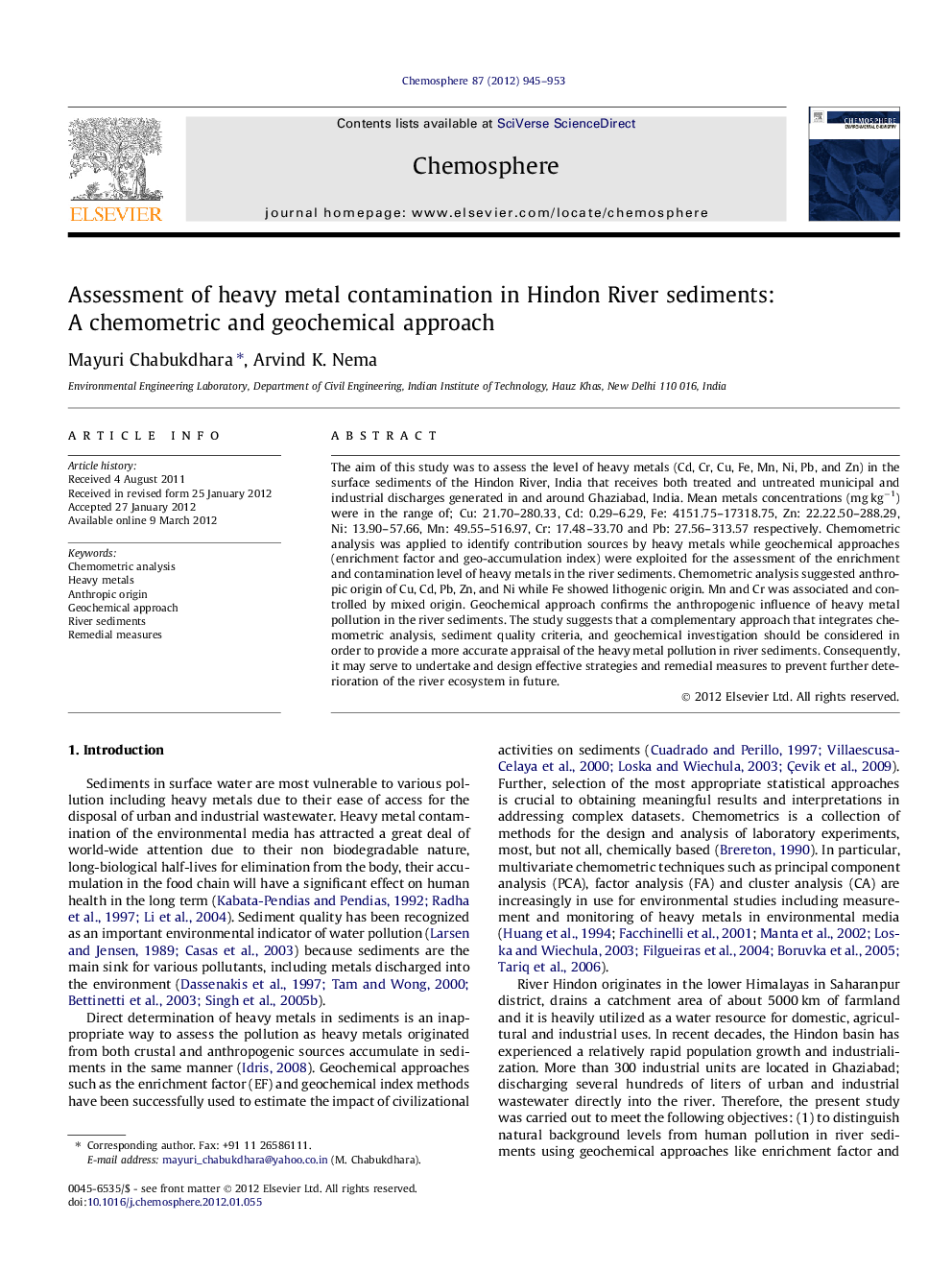| Article ID | Journal | Published Year | Pages | File Type |
|---|---|---|---|---|
| 4410383 | Chemosphere | 2012 | 9 Pages |
The aim of this study was to assess the level of heavy metals (Cd, Cr, Cu, Fe, Mn, Ni, Pb, and Zn) in the surface sediments of the Hindon River, India that receives both treated and untreated municipal and industrial discharges generated in and around Ghaziabad, India. Mean metals concentrations (mg kg−1) were in the range of; Cu: 21.70–280.33, Cd: 0.29–6.29, Fe: 4151.75–17318.75, Zn: 22.22.50–288.29, Ni: 13.90–57.66, Mn: 49.55–516.97, Cr: 17.48–33.70 and Pb: 27.56–313.57 respectively. Chemometric analysis was applied to identify contribution sources by heavy metals while geochemical approaches (enrichment factor and geo-accumulation index) were exploited for the assessment of the enrichment and contamination level of heavy metals in the river sediments. Chemometric analysis suggested anthropic origin of Cu, Cd, Pb, Zn, and Ni while Fe showed lithogenic origin. Mn and Cr was associated and controlled by mixed origin. Geochemical approach confirms the anthropogenic influence of heavy metal pollution in the river sediments. The study suggests that a complementary approach that integrates chemometric analysis, sediment quality criteria, and geochemical investigation should be considered in order to provide a more accurate appraisal of the heavy metal pollution in river sediments. Consequently, it may serve to undertake and design effective strategies and remedial measures to prevent further deterioration of the river ecosystem in future.
► Chemometric analysis shows anthropic origin of Cu, Cd, Pb, Zn, and Ni. ► Mn and Cr are controlled by mixed origin and Fe shows lithogenic origin. ► Geochemical approach confirms anthropogenic influence of heavy metal pollution. ► Chemometric and geochemical approach can be used suitably for pollution assessment.
